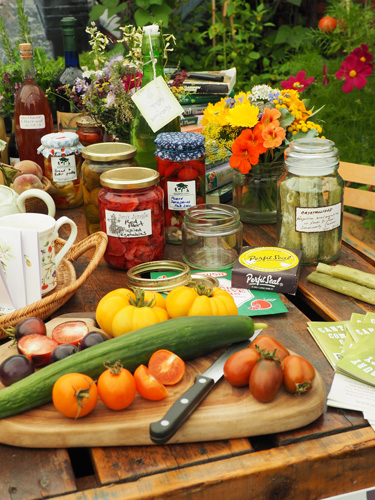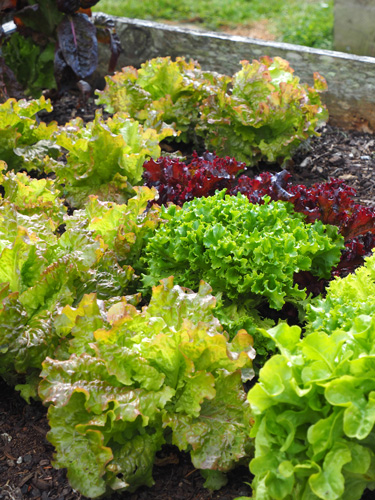Awesome Autumn
Autumn is a rewarding time in the vege garden with both harvesting and new planting to enjoy. Tomatoes, cucumbers and zucchinis (that haven’t succumbed to powdery mildew) are still going strong. Pumpkins are ready for harvest, eggplants and capsicums too. Chillies have harboured all the heat of summer and usually we have more than we can eat - but they can be preserved, dried, put in jars as chilli jam or frozen for future use.
The challenge at this time of year is finding space to plant winter crops while we’re still picking summer’s riches. Northern gardeners have plenty of time to plant cabbages and broccoli but in the cooler middle and southern regions, brassicas need to go in if they are to make the most of the warm weather to get their roots well established by winter. Brussels sprouts and broad beans are cool-climate treats well worth growing if your winter is prone to frost, but get them in soon. In the ‘winterless’ north there is still time to sow another batch of summer beans.
Other vegetables to sow direct in March are rocket, radish and root vegetables. Beetroot can be sown now in any climate and you can enjoy eating the leaves as well as the roots. Carrots and parsnips can still be sown throughout the North Island in March. In the colder south it’s best to wait until August or September.
If you’re waiting for summer crops to finish before you can free up some soil space for winter crops, you could start some brassicas or winter salad greens from seed for transplanting later. You might also plant some herbs and salad veges in containers for a quick autumn crop, but these will need lots of watering, especially if dry weather persists. Plant lettuces every few weeks for a continuous supply.
Autumn is a key planting time for members of the onion family, with lots of interesting varieties of leeks, multiplying onions, shallots and spring onions to try. Garlic, traditionally planted on the shortest day, can be planted successfully from March onwards.
March planting guide
|
North |
Middle |
South |
|
Beetroot |
✔︎ |
✔︎ |
✔︎ |
Sow direct or plant seedlings |
Beans |
✔︎ |
|
|
Sow directly into well prepared soil |
Broad beans |
|
✔︎ |
✔︎ |
Sow directly into well prepared soil |
Brussels sprouts |
|
✔︎ |
✔︎ |
Plant seedlings or sow in trays for planting out later |
Cabbage, broccoli, cauliflower, kale, cavilo nero |
✔︎ |
✔︎ |
✔︎ |
Plant seedlings or sow in trays for planting out later |
Carrot, parsnip |
✔︎ |
✔︎ |
|
Sow directly into well prepared soil |
Leeks, Onions, Spring onions |
✔︎ |
✔︎ |
✔︎ |
Sow direct or plant seedlings |
Lettuce, rocket, mizuna |
✔︎ |
✔︎ |
✔︎ |
Sow or plant |
Radish |
✔︎ |
✔︎ |
✔︎ |
Sow directly into well prepared soil |
Silverbeet |
✔︎ |
✔︎ |
✔︎ |
Sow or plant |
Swede |
|
✔︎ |
✔︎ |
Sow directly into well prepared soil |
Autumn projects
Build a compost heap. When the leaves start to fall from the trees and the lawn has its autumn growth spurt you’ll have nature’s perfect ingredients with which to make your compost?
Squirrel a winter supply. Don’t waste a thing. Pick and preserve tomatoes in whatever way you prefer - bottle, freeze or dry.
Plant a citrus tree. If you already have citrus in your garden, consider planting another variety with a different fruiting time. It’s possible to have fruit all year round in a warm climate.
Build a raised bed. Raising the soil level is a great way to make gardening easier on your back while improving soil drainage, which encourages faster healthier vege growth especially in winter if you have heavy clay soil.
Create a cloche cover. Whether birds are your main problem or your plants need protection from winter cold, convenient crop covers are worth their weight in gold.
Revamp the watering system while the leaks and deficiencies of the past few months are still fresh in your mind.
1-Mar-2016


Plant lettuces every few weeks for a continuous supply.


